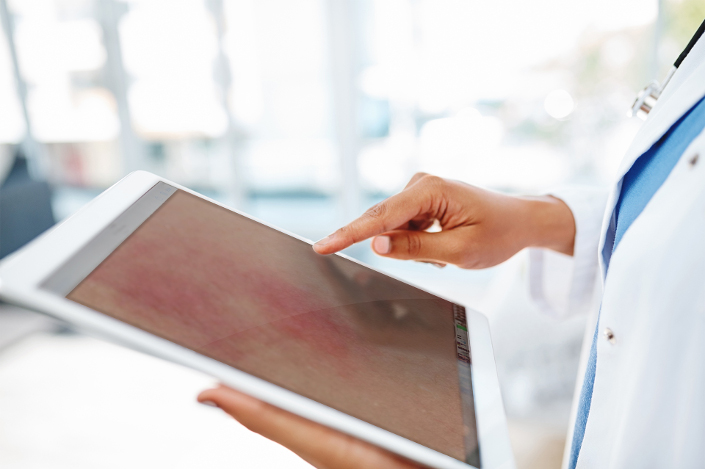Teledermatology: Facilitating rapid diagnosis without patient travel
by Jessica Herráiz, February 17, 2021

If we are sure of one thing a year after the beginning of the pandemic, it is that COVID-19 has rapidly accelerated the implementation of different technology models that, in certain clinical specialties, had been in development for years, but were only being implemented slowly.
That is the situation of Teledermatology (TD), which has played a greater role during the pandemic, in spite of not being new, and having shown good results over the past few years. This is affirmed by different articles like “Teledermatology in the time of pandemic: The before, the during, and the after.” This article confirms that TD has increased more in acceptance and use over the past two months of COVID-19 lockdown than over the past twenty years.
But what is Teledermatology?
As described by the Healthy Skin Foundation, part of the Spanish Academy of Dermatology and Venereology, Teledermatology is distance dermatology, that is, caring for patients remotely using telecommunications and information technology. This is a model that has an enormous potential in this clinical specialty, thanks to the collection, storage, and transmission of dermatology images, which are key to the diagnosis and follow-up of this type of disease.
As noted by the Healthy Skin Foundation, all this has enabled dermatology to be the first clinical specialty with more developments in telemedicine, which are becoming the support tools allowing the dermatologists rapid access to their patients, improving the diagnostic and treatment processes as well as the ability to prioritize according to the severity of the disease, without the need for carrying out an in-person consultation. In fact, before COVID-19 there were already centers that had managed to carry out 70% of the dermatology consultations through TD, avoiding a hospital visit.
This is not the only impact. Teledermatology is a practical reality that is helping optimize consultations in oncological dermatology, with good satisfaction on the part of the patients. This was demonstrated in a study carried out in the United Kingdom regarding the satisfaction of patients in a Teledermatology service for skin cancer patients where there was a two-week waiting time. This study found that more than 80% of the patients would recommend the services, feeling confident with this model.
Currently, thanks to the most recent advances, Teledermatology offers a broad range of possibilities, going beyond the transmission of patient images to the physician, now also offering the possibility of incorporating symptoms, quality of life, and emotional state of the patient, all aspects of vital importance for adapting treatments and facilitating decision-making. Now it is important to take advantage of the impetus of the COVID-19 pandemic to continue implementing and improving this model, providing more Teledermatology services as complementary support for in-person consultations.
Share

Jessica Herráiz
Business Development
Persei vivarium

